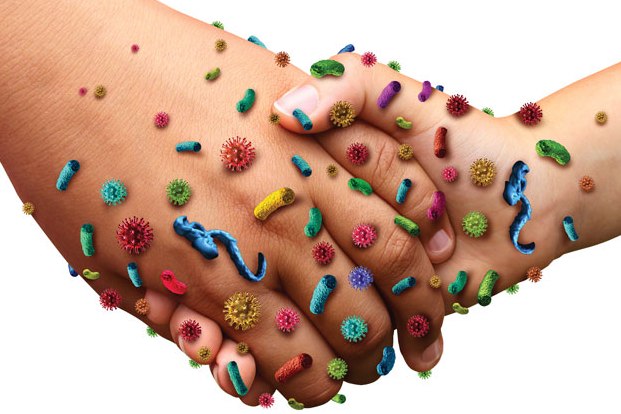How Are Diseases Transmitted?
Apr 19, 2022
Infectious diseases can be transmitted from person to person through direct or indirect contact and can be caused by certain types of viruses, bacteria, parasites, and fungi. Examples of infectious diseases include malaria, measles, and respiratory illnesses.

Disease transmission can be cut down by simple preventative measures, such as frequent hand washing.
Direct contact
Infectious diseases can spread through direct contact. Types of direct contact include:
- Person-to-person contact
Infectious diseases are generally transmitted through direct person-to-person contact. When an infected person touches or exchanges body fluids with someone else, transmission occurs. This can take place before an infected person is aware of the illness. Pregnant women, via the placenta, can also transmit infectious diseases to their unborn children such as some STDs, including gonorrhea.
- Droplet spread
The spray of droplets throughout coughing and sneezing can also spread an infectious disease. Through droplets created when you speak, you can even infect another person. Since droplets fall to the ground within a few feet, this type of transmission requires close proximity.
Indirect contact
Some infectious diseases can also be spread indirectly through the air and other mechanisms.
- Airborne transmission
Some infectious agents can travel extensive distances and remain hovering in the air for an extended period of time. Disease like measles can be caught by entering a room after someone with measles has departed.
- Contaminated objects
Some organisms are able to survive on objects for a short time. If you touch an object, for example a doorknob, soon after an infected person has touched it, you might be exposed to infection. Transmission takes place when you touch your mouth, nose, or eyes before thoroughly washing your hands. Germs can also increase through contaminated blood products and medical supplies.
- Food and drinking water
Contaminated food and water can transmit infectious diseases. Improperly handled produce or undercooked meat often transmits E. coli.
- Animal-to-person contact
In some instances, infectious diseases can be transmitted from an animal to a person such as when an infected animal bites or scratches you or when you handle animal waste. People with compromised immune systems and pregnant women should take extra care (disposable gloves and good hand washing).
- Animal reservoirs
Sometimes animal-to-animal disease transmission can transfer to humans. Such occurrence when diseases are transferred from animals to people is known as Zoonosis. Zoonotic diseases include anthrax (from sheep), rabies (from rodents and other mammals), plague (from rodents), etc.
- Insect bites (vector-borne disease)
Some zoonotic infectious agents are transmitted by insects, especially those that suck blood like mosquitoes, fleas, and ticks. When insects feed on infected hosts, such as birds, animals, and humans, they too end up infected. The disease is then transmitted when the insect bites a new host. Diseases such as Malaria, West Nile virus, and Lyme all spread this way.
- Environmental reservoirs
Soil, water, and vegetation containing infectious organisms, such as hookworm which is transmitted through contaminated soil, can also be transferred to people. An example of a disease that can be spread by water that supplies cooling towers and evaporative condensers is Legionnaires’ disease.









